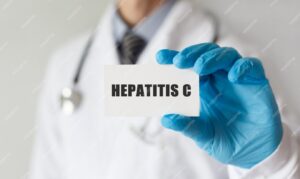Hepatitis C is a significant global health concern and a leading cause of chronic liver disease, including cirrhosis and liver cancer. Understanding the link between hepatitis C and liver disease is crucial for prevention, early detection, and effective management.

What is Hepatitis C?
Hepatitis C is a viral infection caused by the hepatitis C virus (HCV) that leads to inflammation of the liver. The disease can present as an acute (short-term) infection or progress to a chronic (long-term) condition. While some people clear the virus spontaneously, the majority develop chronic hepatitis C, which can result in serious liver complications over time.
How Does Hepatitis C Cause Liver Disease?
After initial infection, hepatitis C often remains asymptomatic for years. Over time, chronic infection can lead to ongoing liver inflammation and damage. This increases the risk of developing:
- Liver fibrosis (scarring)
- Cirrhosis (advanced scarring, which impairs liver function)
- Hepatocellular carcinoma (primary liver cancer)
- Liver failure
According to the World Health Organization, around 15–30% of those with chronic HCV infection develop cirrhosis within 20 years1. Hepatitis C is also a leading cause of liver transplants in many countries.
Transmission and Risk Factors
Hepatitis C is a bloodborne virus. The main routes of transmission include:
- Sharing needles or syringes (most common in many regions)
- Unsafe medical procedures or unscreened blood transfusions
- Sharing personal items that may have blood (razors, toothbrushes)
- Mother-to-child transmission during childbirth
- Less commonly, unprotected sex with an infected person
Symptoms and Diagnosis
Symptoms:
Most people with hepatitis C do not experience symptoms until significant liver damage has occurred. When present, symptoms may include:
- Fatigue
- Loss of appetite
- Nausea or vomiting
- Abdominal pain
- Dark urine
- Jaundice (yellowing of skin or eyes)
Diagnosis:
Testing for hepatitis C involves two steps:
1. Antibody test: Detects antibodies to HCV, indicating exposure.
2. RNA test (PCR): Confirms active infection by detecting the virus in the blood.
Further tests, such as liver function tests or imaging, assess the degree of liver damage and guide treatment.
Treatment and Outlook
Treatment:
Direct-acting antiviral (DAA) medications can cure over 95% of hepatitis C infections, often with few side effects and short treatment durations. Early treatment can prevent progression to cirrhosis and liver cancer.
Prevention:
There is currently no vaccine for hepatitis C. Prevention focuses on:
- Avoiding sharing needles or personal items
- Ensuring safe medical practices and blood screening
- Regular testing for at-risk groups
Key Facts
- Hepatitis C is a leading cause of chronic liver disease, cirrhosis, and liver cancer worldwide.
- Most people are unaware they have hepatitis C until advanced liver damage occurs.
- Early detection and treatment with DAAs can cure the infection and prevent serious complications.
- There is no vaccine, so prevention and regular screening are vital.
Related FAQs
1. How is hepatitis C diagnosed?
Hepatitis C is diagnosed with an antibody blood test followed by an RNA test to confirm active infection.
2. What are the long-term risks of untreated hepatitis C?
Untreated hepatitis C can cause chronic liver disease, cirrhosis, liver cancer, and liver failure.
3. Is there a cure for hepatitis C?
Yes, direct-acting antiviral medications can cure over 95% of hepatitis C cases.
4. How can hepatitis C be prevented?
By avoiding contact with infected blood, not sharing needles or personal items, and ensuring safe medical practices.
5. Can hepatitis C be asymptomatic?
Yes, most people do not show symptoms until significant liver damage has occurred, making regular screening important for at-risk groups.
Your liver health is our priority- trust our clinic for expert screening, personalized care, and support every step of your Hepatitis C journey. Visit us at tscoaklawn.com/ or call us at (469) 496-2454 to schedule an appointment. Walk-ins & new appointments available.
